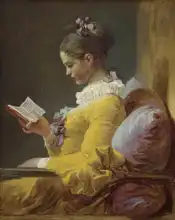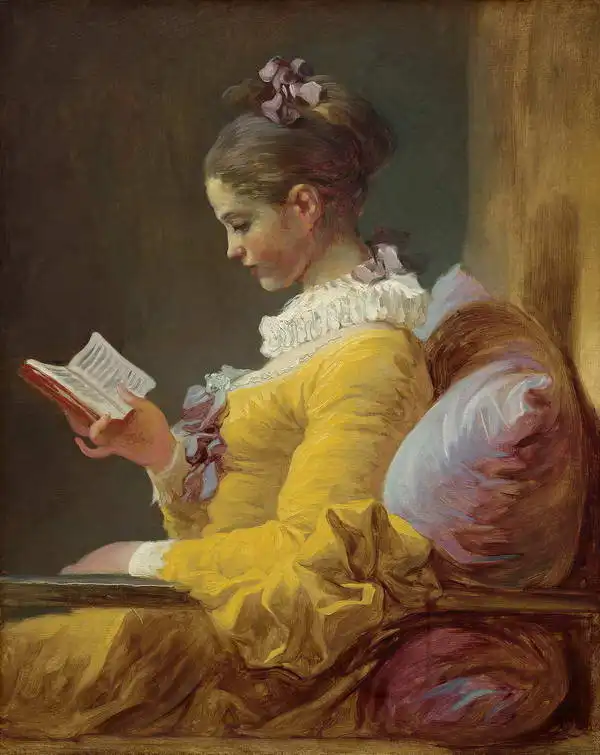Reader
"The Reader" ("La Liseuse" in French) by
Jean-Honoré Fragonard is an oil painting that was painted in the 18th century during the Rococo period, which was characterized by elegant and sentimental scenes. This painting depicts a single woman sitting comfortably on a bed reading a book. "The Reader" by Jean-Honoré Fragonard depicts a young woman sitting on a bed. Her figure is elegantly dressed in soft pastel tones, which is typical of Rococo. The woman wears a light dress with delicate frills and ribbons, which gives her figure lightness and tenderness.
A woman is immersed in reading a book she is holding in her hands. Her attention is fully focused on the text, and it shows in her focused expression. He holds the book in his left hand while holding the page he is currently reading with his right hand.
The painting is illuminated by soft and diffused light, which creates an impression of intimacy and tranquility. This feeling is emphasized by how the woman is naturally placed in her environment, surrounded by cushions and fabrics, creating an impression of comfort.
The overall atmosphere of the painting "The Reader" is calm, intimate and sentimental. Fragonard captured a moment of relaxation and intellectual pleasure that was typical of the social elites of the time. This painting is also a representative example of Rococo, which is characterized by a delicate style and interest in beauty and elegance.
Prevailing color of this fine art print is vivid and its shape is portrait. This image is printed on demand - you can choose material, size and finishing.
French
Baroque painter and printmaker,
Jean-Honore Fragonard (1732-1806) was born in Grasse. Initially, he worked at the Paris notary. His wasn’t too good at it, but he showed new a talent. He was introduced to
Francois Boucher, who saw in the young man a potential future artist. However, he did not want to waste time with one student and therefore sent him to the studio of painter
Jean-Baptiste-Simeon Chardin. There, Fragonard spent six months learning hard and preparing so that he could become a student of the aforementioned
Boucher. When he completed his painting education, he travelled to Italy, where he painted
landscapes. In Europe, he admired the old
Dutch masters and tried to imitate their techniques. In 1765, when Louis XV became his patron, he left behind religious themes and fully devoted himself to scenes of love and eroticism -
Stolen Kiss . Gradually, however, he ceased to be recognized by other artists, and later the general public. He died in 1806 as an almost unknown and forgotten artist.


